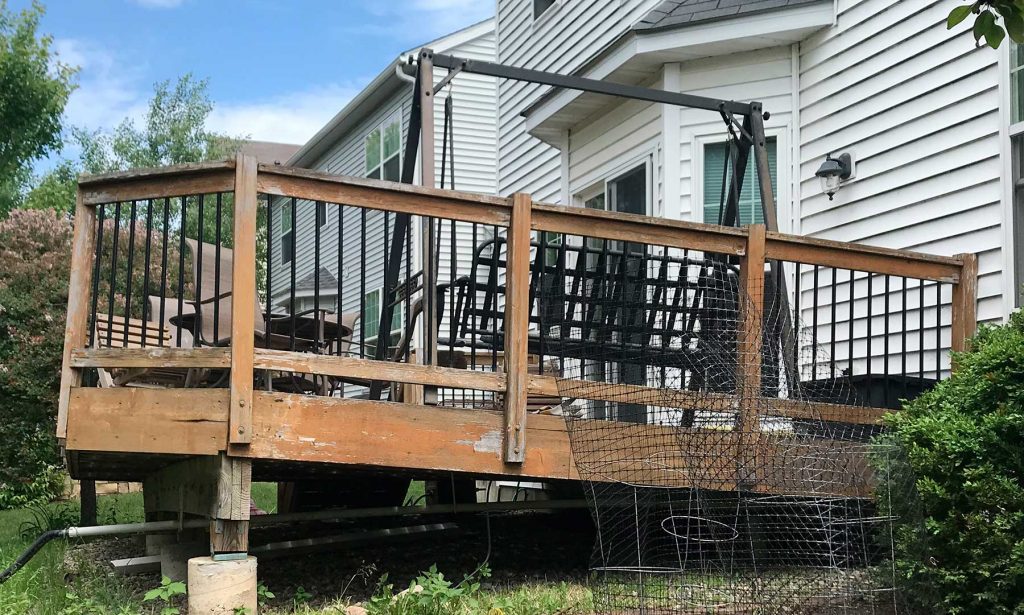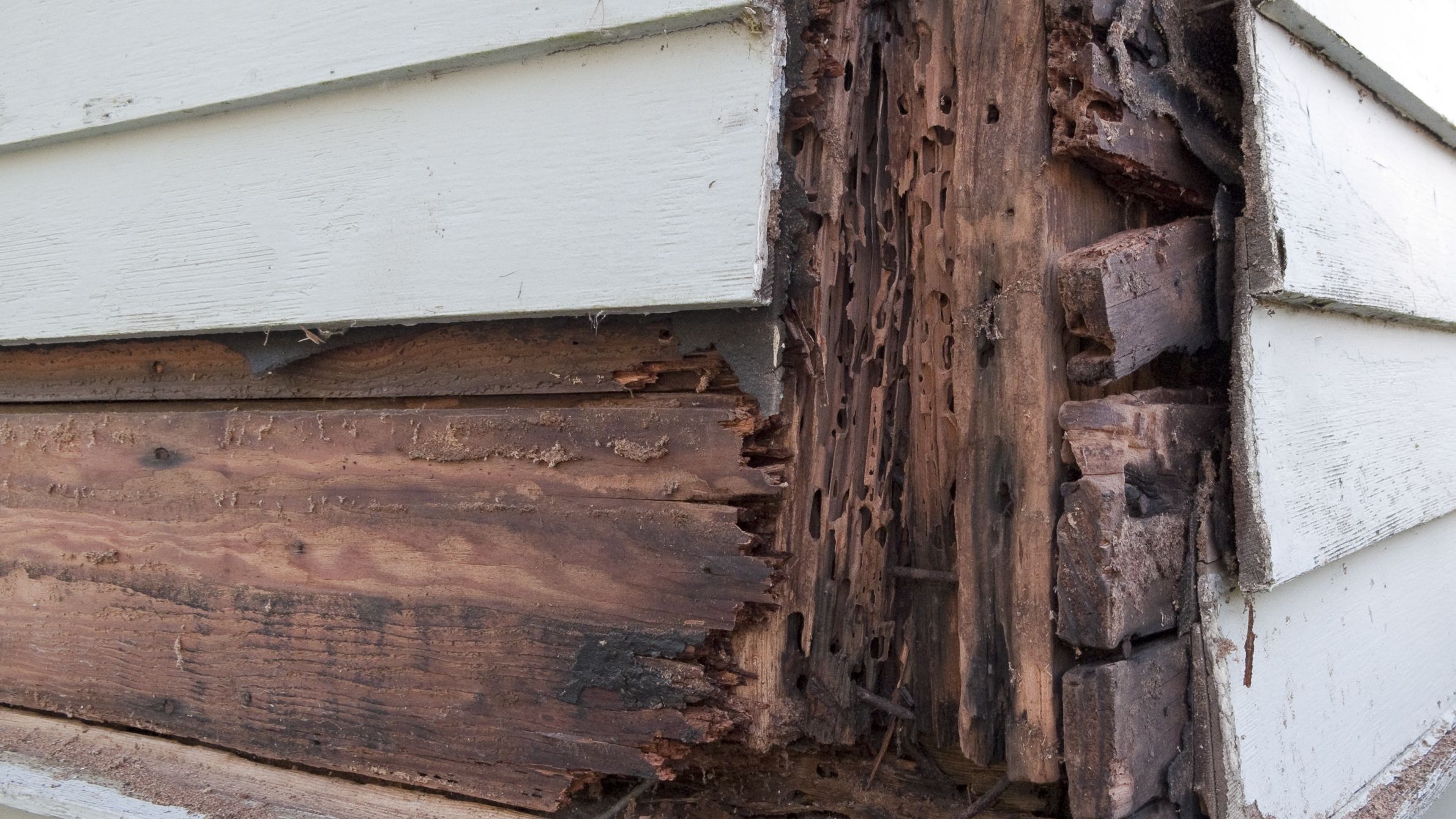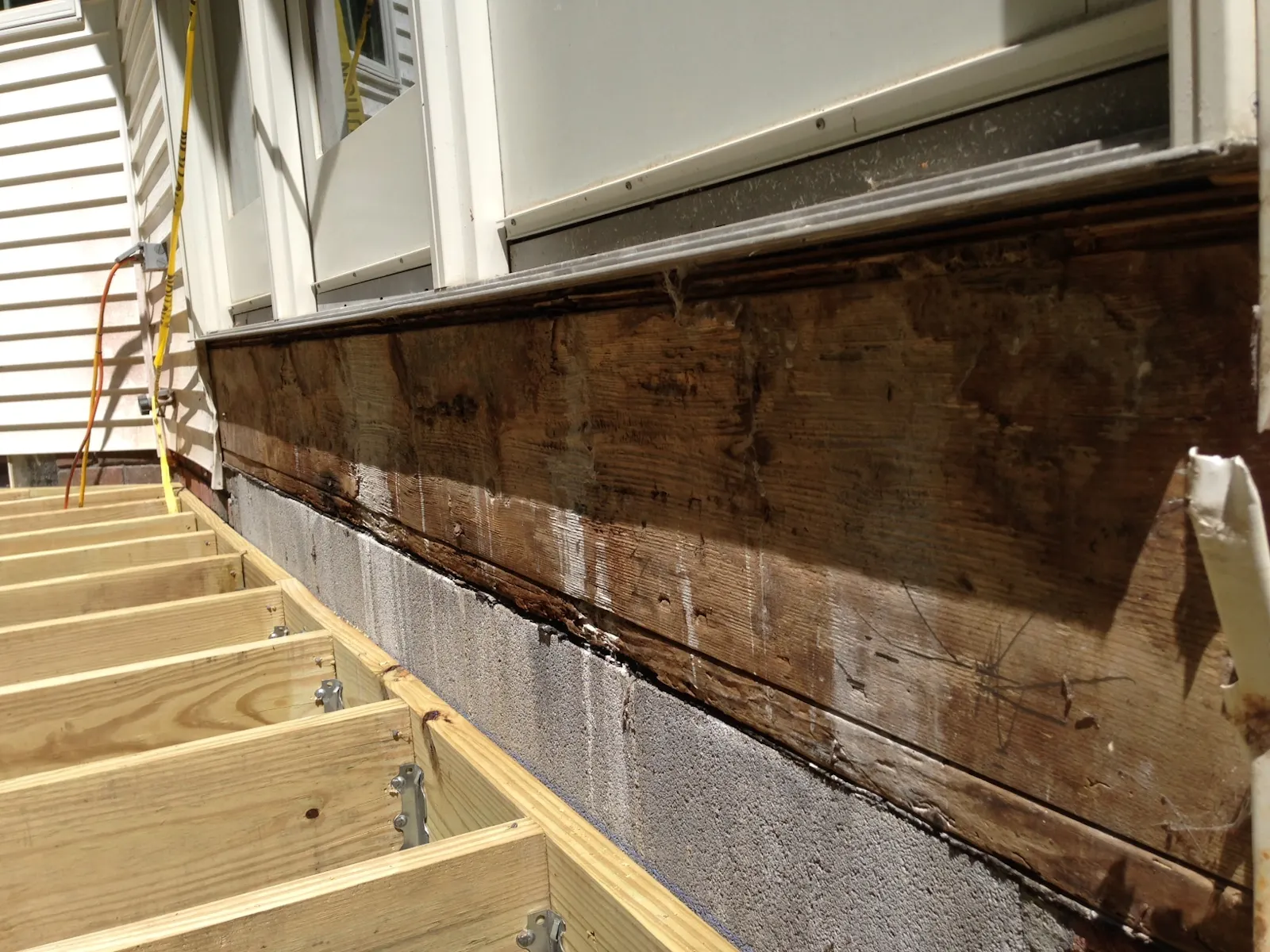Decks are a big investment, but even experienced contractors can make mistakes that make them less safe, less durable, or less attractive. These mistakes usually happen in places that aren’t visible or that are part of the structure. If you know what the most common mistakes are, you can ask better questions, spot problems, and make sure your deck will last.
In this article, you’ll learn about the most common problems that can happen, such as ledger mistakes, footing errors, fastener problems, and design oversights. You’ll also learn how Decked Out Builders handles every step to avoid them.
Ledger Board Failures
One of the worst things you can do is not attach the ledger board to the house correctly. The ledger holds a lot of weight from the deck, so it needs to be attached to structural framing, not siding or sheathing. Using nails, bolts that are too small, or connections that aren’t properly flashed can lead to a lot of mistakes. If water gets behind ledger flashing, it can rot the wood and make the deck pull away.
Using through-bolts or approved ledger connectors is a safer way. We also take off the siding on the outside, flash with membrane and rigid flashing, and use stainless steel or properly coated fasteners to keep them from rusting.



Inadequate Footings or Undersized Supports
Footings support the entire structure, so shallow or undersized footings lead to settling, heaving, shifting, or failure especially during freeze-thaw cycles. Some builders skip inspection or pour footings too early before the soil is cleared.
Local codes often require footings to extend below the frost line, based on soil type and load. In our area, that means four feet or more. We always confirm soil conditions, dig to sound ground, pour correct concrete strength, and wait for proper curing before proceeding.
Improper Joist or Beam Attachment
A common mistake involves how beams and posts connect. Some builders fasten beams to the sides of posts using bolts that cause the wood to split or shift. Others install joists with insufficient support, using improper hangers or skipping blocking.
We use tested structural connectors, beam-on-post bearing brackets, and double up joists when loads require it. All members are secured with hardware rated for exterior use to maintain strength and alignment over time.
Wrong Fasteners and Hardware
Using the wrong fasteners is a mistake that seems small but is actually very serious. Corrosion happens when builders use screws, nails, or hardware that isn’t rated for pressure-treated wood. Fasteners can get weaker, come loose, or let structures move over time.
Deck screws, joist hangers, post anchors, and flashing are all hidden fasteners that need coatings that resist corrosion, such as stainless steel or triple-galvanized steel. We carefully follow the manufacturer’s instructions and choose hardware that won’t react with treated wood.
Ignoring Drainage and Ventilation
Moisture is the enemy of decks that you can’t see. Water collects, wood stays wet, and mold or rot forms when there isn’t enough air flow under the deck or the right slope for drainage. Some builders don’t leave enough space between the deck and the ground or the landscaping.
We make sure that there is clear air space under decks (usually 12 inches if possible) and that the boards are spaced correctly.
Skipping Codes, Inspections, or Proper Design
Building codes, rail heights, stair dimensions, guardrail spacing, and other things must often be followed when working on a deck. Some builds don’t submit or use old methods that don’t pass inspection. If you make a mistake here, you could have to redo the work, pay a fine, or be responsible for safety.
We get permits, submit engineered drawings as needed, and pass inspections at every step before moving on to the next. We don’t just build for looks; we also build for safety and to get permission from the authorities.
Overlooking Stair, Handrail, and Guardrail Safety
Mistakes in stair or handrail design are common. People forget to include a continuous handrail on stairs with four or more risers. Others break the top rail with posts or leave sections non-graspable in violation of code.
We follow a strict code for tread depth, riser height, guardrail height, continuous graspability, and post spacing. We check stair stringer strength, step alignment, and vertical clearances so the movement feels solid and secure.
Poor Finish or Edge Treatment
Many builders neglect clean edges, fascia, or trim. This results in uneven overhangs, exposed framing, or board ends that look rough or get damaged. Water intrusion at edges can degrade components over time.
We always apply fascia, wrap edges, install picture framing or breaker boards, and cut boards square to complete the visual and protect edges from water damage.
Changes, On-Site Modifications, and Scope Creep
Changes made in the middle of a project or that weren’t planned are a common cause of mistakes. Adding a pergola, moving the stairs, or changing the positions of the rails without checking the structure again can cause uneven loads, misalignment, and loose connections.
We lessen this by finishing the design in 3D before building. If things change, we reengineer connections, change framing, and get new permits so that the final product is still strong and well-planned.
Why Professional Processes Matter
People usually make mistakes when they don’t follow the steps or don’t put enough money into structure. At Decked Out Builders, there is a strict process for every deck: design, permit, inspection, structure, and finish. We check for quality at every stage to stop mistakes before they happen.
We don’t build by chance. We build according to a plan. A strong understructure and careful choices, not compromise, lead to finishes that look good.
If you need help figuring out if your plan is good or finding possible problems before construction starts, please contact us. We’ll look over your design and point out any risks.
Contact Us | 815-900-5199


